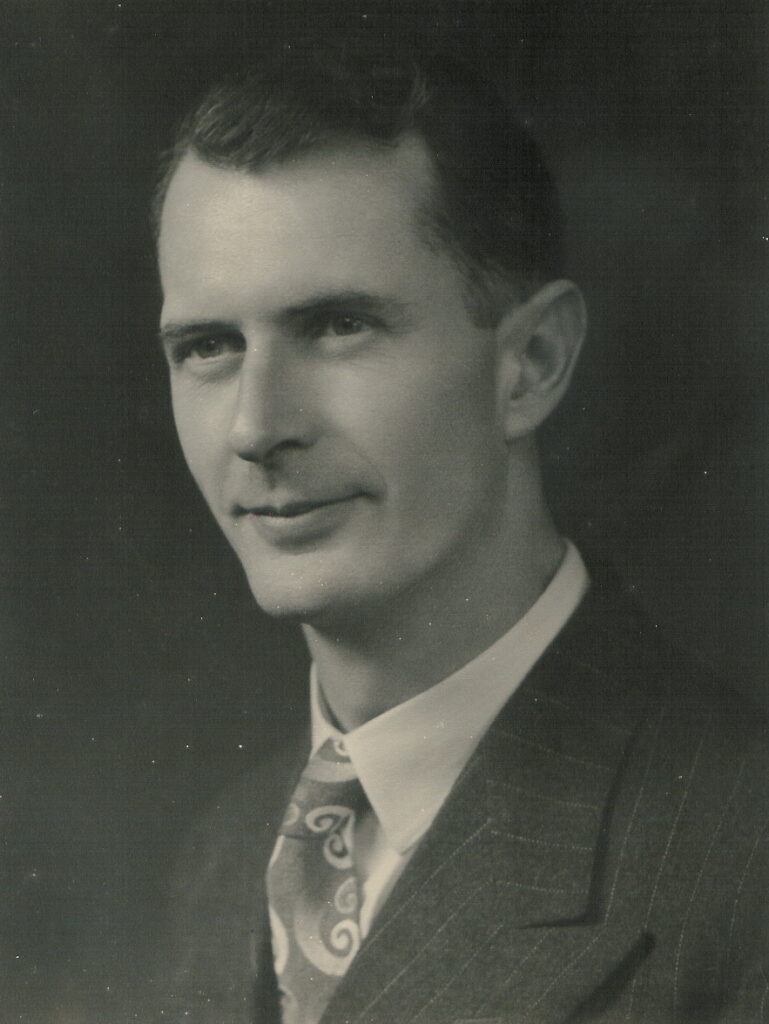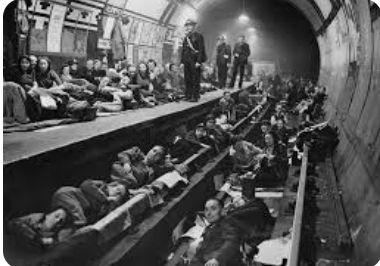Norman was standing at his study window, gazing idly at the peaceful scene across the valley. On the far side, the airport slumbered in the dusk. A very thin mist hung over the runways. An aircraft on short final approach. its headlights probing the gloom. made an interesting picture. Suddenly his memory jerked back fifty-odd years….
Main picture: London during the Blitz
Norman Smith recorded his memories of that event some fifty years later as follows:
It is 9.30 p.m. on 9th September 1940. We are in Winchester Court, a block of flats in Vicarage Gate, Kensington, in London. The sirens long ago wailed their message that yet another wave of enemy bombers is on its way to the embattled city. Consequently I am propped up on one elbow, half-lying on a rug on the carpet of the ground-floor corridor in the building.
The abject terror which. only some six weeks ago resulted from the strains of “Wailing Willie” in the middle of the night, have given way to a kind of resigned acceptance of this rearrangement of my life-style. Nevertheless it is difficult to divide effectively my concentration between the intricacies of the rules governing Integral Calculus on the one hand and the drone of aircraft growling somewhere overhead on the other.
Next to me, his back propped up against the wall of the corridor is Roy Nockolds, a youngish War Department artist working on a pencilled ”rough” of a Hurricane coming in to land on a slightly misty airfield “somewhere in England”. The aircraft’s headlights cut a barely discernable swathe through the thin mist. I know that later Roy will fill out this sketch in oils. I decide to ask him for the sketch when he has finished with it.
A thin hissing sound grows, incredibly rapidly, to a roar resembling that of a locomotive blowing off steam, rushing through a station. It culminates in a bang like a rather large fire cracker, followed by a dead silence. I scramble to my feet because the double doors at the end of the corridor, leading to the goods-lift, have come off their hinges – thankfully the wire bonded glass panels in the doors remain intact. Through the doorway pours a silent cloud of dust. I realise that it is going to be difficult to breathe when this cloud envelopes me, so I grab the gas-mask that we were all advised to keep handy during air-raids. I pull it on just as the cloud pours over me.
Instantly I am in pitch darkness. I quite unreasonably assume that I have put the mask on incorrectly, so I snatch it off again – mistake! I was correct in the first case in thinking that it would be difficult to breathe. It was. What had happened was that the duJ!!-cloud had swept over me and had totally blacked out the fluorescent light only half a metre above my head.
My coughing lasted only about a minute. Then I remembered that my mother had gone down to the basement which was serving as an air-raid shelter. I stumbled in the dusty gloom through the erstwhile doorway to the stairs which had led down around the lift-shaft to the lower level. The going was rough – bricks and rubble slowly became visible as my eyes became adjusted to the dim light. It was soon obvious that a high-explosive bomb had hit the house next door and that the debris had poured down into the space between our buildings – a space in which , only five minutes earlier, I had wandered to extinguish my cigarette.
When I stumbled down the last of the ankle-twisting steps into the basement area there was understandably an air of confusion and mild panic. Mother was visibly in slight shock but soon recovered when I assured her that no serious damage had been done to our locale. [What I didn’t know was that our three or four rubbish bins were buried under the debris and that the waste-water and sewage pipes had been severed by the blast and were now discharging their loads deep in the fallen masonry. These facts became painfully obvious during the following couple of days before the demolition teams could get around to us!]
At first sight it seemed that nobody in the basement had suffered any more than a nasty shake up. However, Roy’s mother, who had also elected to settle down in that area, was in a bad way. He took it rather badly when she died a little before dawn.
I never had the heart to ask him for the sketch. My hearing slowly returned a little while later.
Note on the author
Norman Smith was the son of Harold Bayldon Smith, the last owner of No. 7 Castle Castle Hill. Writing was clearly one of his skills. I have included the articles on Port Elizabeth under Port Elizabeth of Yore whereas those of a general interest have been published under Norman’s name.


